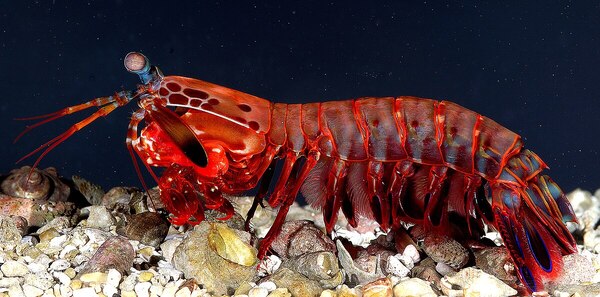In the animal kingdom, reaction time is crucial for survival, whether it’s evading predators, catching prey, or navigating complex environments. Different species have evolved various adaptations to enhance their speed and agility. In this article, we will explore which animal has the quickest reaction time, examining various contenders and the fascinating biology behind their remarkable speed.
The mantis shrimp (Stomatopoda) is renowned for its incredible reaction time, particularly during its powerful strike. Research has shown that mantis shrimp can strike their prey at speeds of 80 kilometers per hour (50 miles per hour). Their reflexes are so rapid that they can respond to stimuli in just one millisecond.
This extraordinary speed is facilitated by specialized appendages called raptorial claws, which can be accelerated faster than a bullet. The mantis shrimp's compound eyes also provide a wide field of vision and excellent depth perception, enabling them to accurately target their prey.

While the mantis shrimp excels in reflexes, the peregrine falcon (Falco peregrinus) holds the title for the fastest bird and the fastest animal on the planet. During its hunting stoop (high-speed dive), it can reach speeds of over 240 kilometers per hour (149 miles per hour). Its ability to react swiftly to the movements of prey makes it a formidable predator.
The peregrine falcon's keen eyesight allows it to spot prey from great distances, and its aerodynamic body shape minimizes air resistance during high-speed dives. These adaptations combine to ensure that it can make quick and precise movements while hunting.

Flies, particularly the common housefly (Musca domestica), exhibit impressive reaction times. Flies can react to threats in as little as 30 milliseconds, making them exceptionally agile in avoiding predators. Their ability to quickly take off and change direction allows them to evade capture with remarkable ease.
Flies possess large optic lobes in their brains that process visual information rapidly, enabling them to respond almost instantaneously to movements in their environment. This quick response time is essential for their survival in the wild.

Jumping spiders (Salticidae) are not only known for their keen eyesight but also for their quick reaction times. They can react to stimuli within several milliseconds, allowing them to make precise jumps to catch prey or escape predators.
These spiders have excellent vision, with four pairs of eyes that allow them to detect motion and depth effectively. Their quick reflexes and ability to judge distances accurately make them formidable hunters despite their small size.

The African impala (Aepyceros melampus) is known for its agility and quick reflexes. When threatened by predators, impalas can leap up to 3 meters (10 feet) in the air and change direction rapidly to evade capture. Their reaction time can be as quick as 0.5 seconds.
With their powerful legs and strong muscles, impalas can sprint at speeds of up to 80 kilometers per hour (50 miles per hour). This combination of speed and agility allows them to escape predators effectively.

Determining which animal has the quickest reaction time is complex, as it depends on the context and specific adaptations of each species. The mantis shrimp stands out for its incredible reflexes during strikes, while the peregrine falcon showcases speed in aerial maneuvers. Flies and jumping spiders demonstrate rapid responses to threats, while the African impala excels in agility and evasion.
Each of these animals illustrates the diverse ways evolution has shaped reaction times in the animal kingdom. Understanding these adaptations not only fascinates us but also highlights the intricate relationships between species and their environments. By studying their remarkable abilities, we gain insights into the complex dynamics of survival in the wild.
animal tags: Mantis-Shrimp
We created this article in conjunction with AI technology, then made sure it was fact-checked and edited by a Animals Top editor.